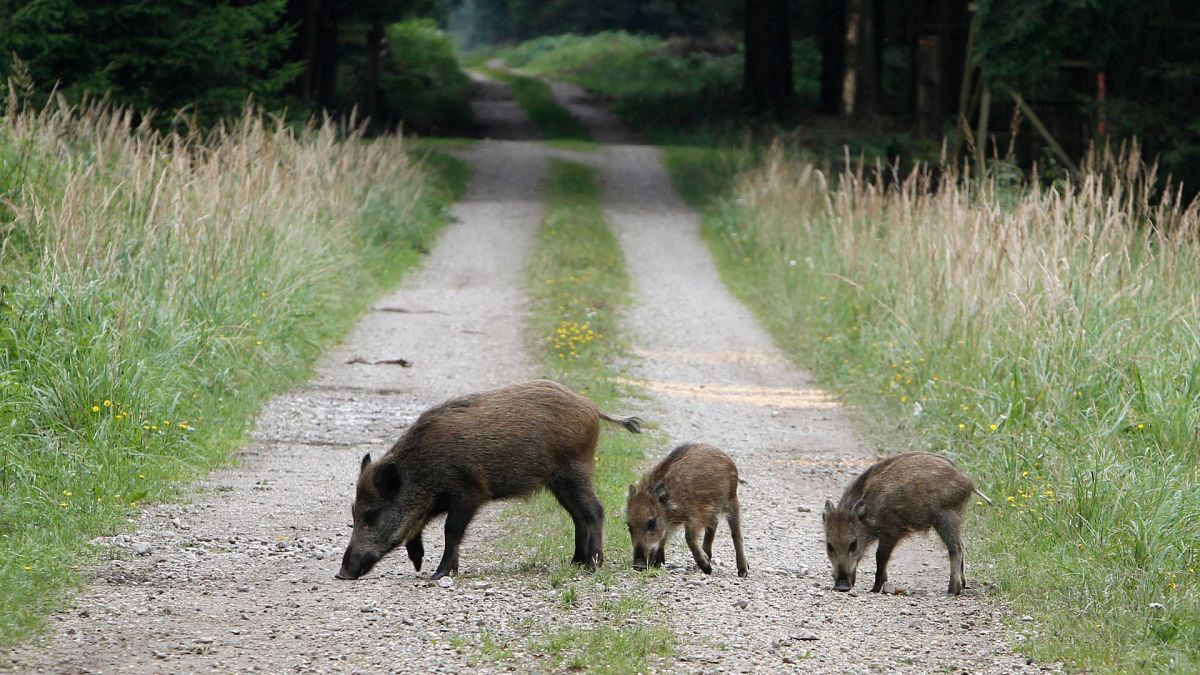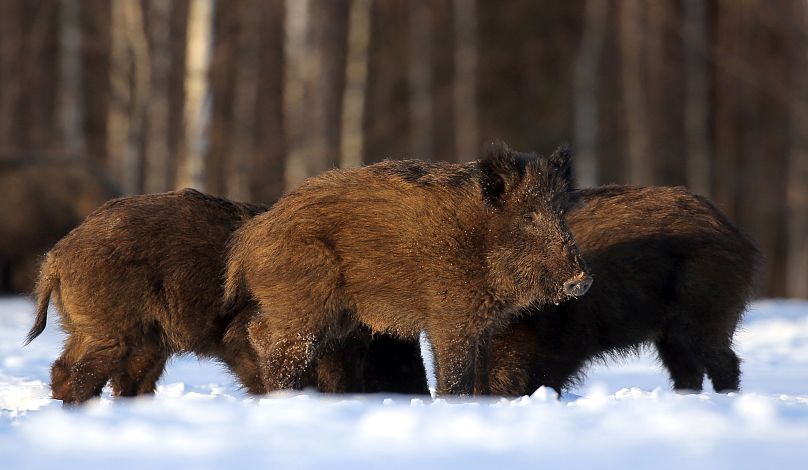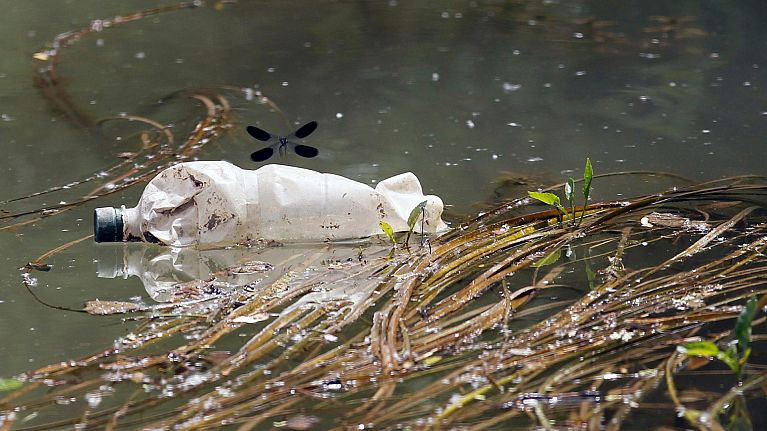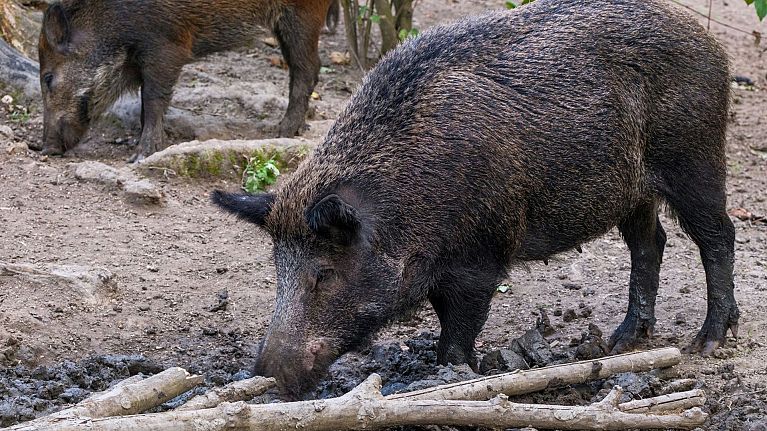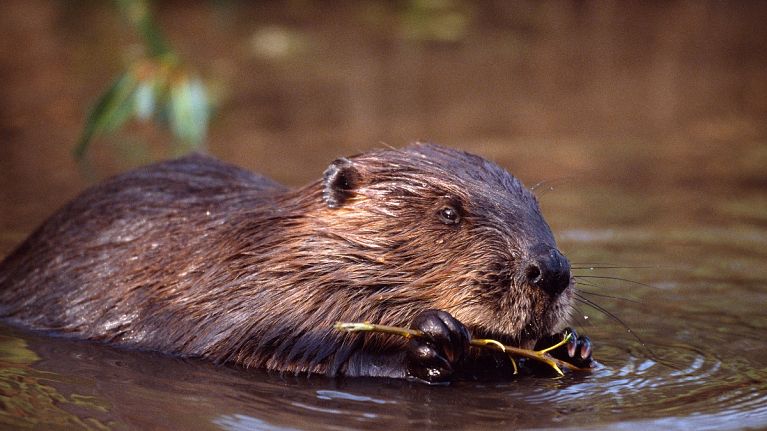It has to do with the pigs’ penchant for a certain truffle - and nuclear weapons tests that predate the accident.
The 1986 Chernobyl disaster forever changed the face of the forest in Central Europe.
Pine trees died and turned russet from the radiation - coining the new name of ‘Red Forest’ for the area where saplings regrew. Plants crept into abandoned buildings in the Exclusion Zone, creating eery images now embedded in humanity’s collective psyche.
Animals joined the resurgence: boar, elk, and roe deer populations have boomed in the decades since the disaster, as well as rarer species of lynx, bison and wolves.
But while we’re all aware of the startling visuals that have emerged from the region in Ukraine, far less is known about the inner life of this world, shot through with radioactivity.
Scientists are still largely in the dark about how healthy Chernboyl’s animals are. And one paradox in particular has puzzled them for years: why are the wild boars still so much more radioactive than other species like deer?
Now, more precise measurements have enabled researchers at the Vienna University of Technology and the Leibniz University of Hannover to solve this “riddle”.
In a new paper published in the journal Environmental Science & Technology, they explain that it has to do with nuclear weapons tests that predate the disaster - and the pigs’ penchant for a certain truffle.
Radioactivity in wild boars has remained surprisingly high
After the accident, people were discouraged from eating local mushrooms and the meat of wild animals because of high radioactive contamination.
The contamination of deer and roe deer decreased over time as expected. But the measured levels of radioactivity in wild boar meat stayed surprisingly high, SciDaily reports.
To this day, some samples of wild boar meat - from populations that have spread across the region - still contain radiation levels significantly over regulatory limits.
Cesium-137 is the key radioactive isotope measured in these samples. It has a half-life of around 30 years - meaning that after 30 years, half of the material has decayed by itself.
Radiation exposure to food typically declines faster, since the cesium has travelled far since Chernobyl - washed out by rainwater, or driven down into the soil, so it stops being absorbed by plants and animals in the same initial quantities.
So after one half-life, most food samples exhibit much less than half the original concentration.
In Bavarian boar flesh however, radiation levels have remained almost constant after nearly 40 years - seemingly breaking the laws of physics.
Why do wild boars have high radioactivity?
To help solve this mystery, a team led by Professor Georg Steinhauser at TU Wien decided to decipher the origin as well as the amount of radioactivity in boars.
"This is possible because different sources of radioactive isotopes have different physical fingerprints," explains Dr Bin Feng, who conducts his research at the Institute of Inorganic Chemistry at Leibniz Universität Hannover and the TRIGA Center Atominstitut at TU Wien.
"For example, they do not only release cesium-137, but also cesium-135, a cesium isotope with a much longer half-life."
The ratio of these two types of cesium varies depending on the nuclear event. A breakthrough in measuring cesium-135 (much harder to pin down) helped the researchers see that the boars bore the marks of a different period: nuclear weapons tests of the 1960s.
The results showed that while a total of about 90 per cent of the cesium-137 in Central Europe comes from Chernobyl, the proportion in the wild boar samples is much lower. Instead, a large proportion of the cesium in wild boar meat tracks back to nuclear weapons testing - up to 68 per cent in some samples.
But again, the question is why?
Deer truffles are at the root of it
As the old adage goes, you are what you eat. The researchers have linked the prevalence of nuclear weapons testing era radiation in the boars to their diet.
The animals are particularly keen on deer truffles - underground growing mushrooms that they dig up. And the radioactive cesium accumulates in these subterranean mushrooms with a long time delay.
"The cesium migrates downwards through the soil very slowly, sometimes only about one millimetre per year," Georg Steinhauser to SciDaily.
Deer truffles, which are found at depths of 20-40 centimetres, are therefore only now absorbing the cesium that was released in Chernobyl. The cesium from "old" nuclear weapons tests, on the other hand, already arrived there some time ago.
The mushrooms - which are likened to marzipan balls rolled in cinnamon - have had a double hit of cesium, which is also decaying over time.
"If you add up all these effects, it can be explained why the radioactivity of deer truffles - and subsequently of pigs - remains relatively constant over the years," says Steinhauser.
"Our work shows how complicated the interrelationships in natural ecosystems can be," he adds, "but also precisely that the answers to such riddles can be found if your measurements are sufficiently accurate."
Given these factors, the contamination of wild boar meat is not expected to drop significantly in the next few years.
That could be bad news for farmers. Wild boars are less hunted in some areas - possibly because their ongoing radioactivity makes them less appealing. And their overpopulation often causes damage to agriculture and forestry.












